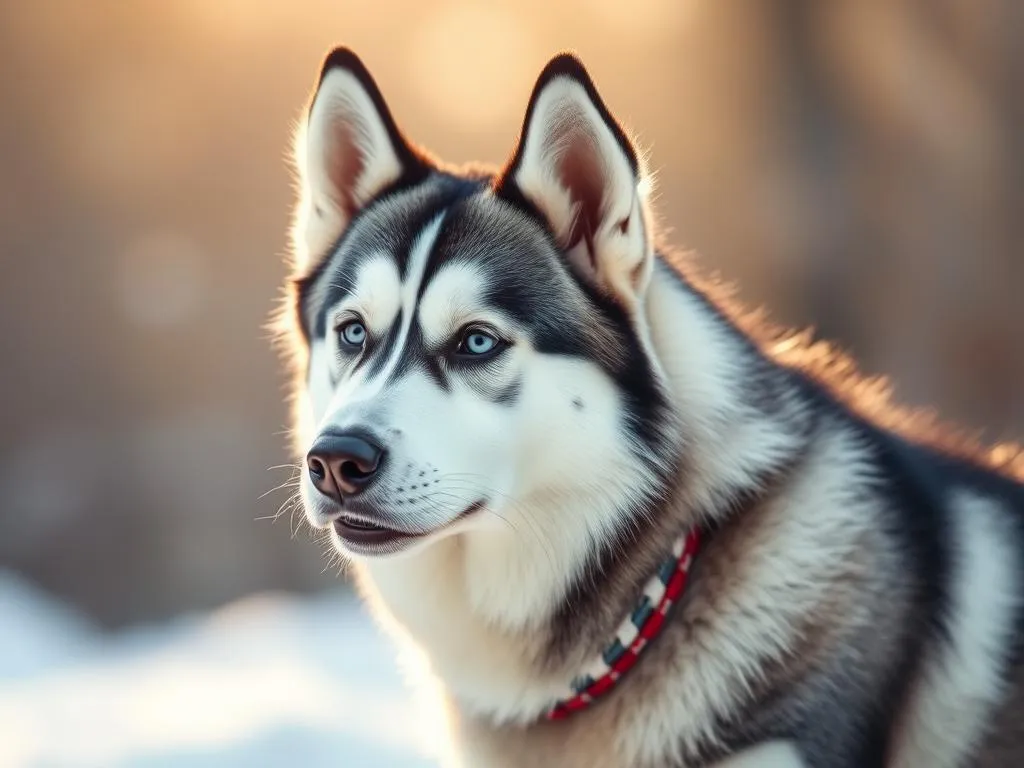
Introduction
The Siberian Husky is a captivating breed known for its striking appearance and friendly demeanor. Originating from the harsh climates of Siberia, these dogs were bred by the Chukchi people for their endurance and ability to pull sleds over long distances. Today, they are one of the most popular dog breeds in various parts of the world, especially in North America, where they are adored for their playful nature and striking looks.
Understanding specific Siberian Husky facts is crucial for potential owners and enthusiasts alike. Knowledge about their health, temperament, and care requirements will help ensure that these dogs lead happy, healthy lives. This article will delve into the fascinating world of Siberian Huskies, covering their history, physical traits, care needs, health considerations, training, and socialization tips.
Overview of Siberian Huskies
History and Origin
The Siberian Husky has a rich history that dates back to the nomadic tribes of Siberia. The Chukchi people relied heavily on these dogs for transportation, hunting, and companionship. Their ability to withstand extreme cold and pull sleds made them invaluable in the frigid Arctic conditions.
In the early 20th century, the breed was introduced to North America, initially for sled dog racing and later as a companion animal. Their adaptability and friendly nature quickly won the hearts of many, establishing their popularity in households across the continent.
Physical Characteristics
Siberian Huskies are medium-sized dogs known for their striking appearance. Here are some key physical characteristics:
- Size and Weight Range: Adult Huskies typically weigh between 35 to 60 pounds and stand about 20 to 24 inches tall at the shoulder.
- Coat Color and Texture: Their double coat can come in a variety of colors, including black, gray, red, and agouti, often with contrasting white markings.
- Eye Color Variations: One of the most distinctive features of Siberian Huskies is their eyes, which can be blue, brown, or even one of each—a condition known as heterochromia.
- Distinctive Physical Features: Huskies have erect ears and a bushy tail that curls over their back, giving them an unmistakable silhouette.
Temperament and Personality
Siberian Huskies are known for their friendly and outgoing nature. Here are some temperament traits:
- General Temperament Traits: They are often described as affectionate, playful, and social. Huskies thrive on companionship and love being part of a family.
- Energy Levels and Playfulness: These dogs are highly energetic and require plenty of exercise to stay happy and healthy. They enjoy playtime and outdoor activities.
- Social Behavior: Huskies generally get along well with other pets and children, making them excellent family dogs. However, early socialization is important to ensure they develop into well-rounded adults.
Care Requirements
Diet and Nutrition
Feeding your Siberian Husky a balanced diet is essential for their overall health. Here are some dietary considerations:
- Recommended Diet: High-quality commercial dog food formulated for active breeds is ideal. Look for options that list meat as the first ingredient.
- Common Dietary Restrictions or Allergies: Some Huskies may develop allergies to grains or certain proteins, so monitoring their reactions to food is essential.
- Importance of Regular Feeding Schedules: Establishing a consistent feeding schedule helps maintain your dog’s weight and overall health.
Exercise Needs
Siberian Huskies are not couch potatoes. They require daily exercise to channel their energy effectively:
- Daily Exercise Requirements: Aim for at least 1-2 hours of vigorous exercise each day. This can include walks, runs, or playtime in a secure yard.
- Recommended Activities: Activities like running, hiking, and participating in dog sports (like agility or sledding) are great for keeping Huskies engaged.
- Mental Stimulation: Providing interactive toys and games can keep their minds sharp and prevent boredom, which can lead to destructive behaviors.
Grooming and Maintenance
Taking care of a Siberian Husky involves regular grooming to keep their coat healthy:
- Shedding Patterns: Huskies typically shed heavily twice a year (spring and fall), so brushing them several times a week during these seasons is crucial.
- Bathing and Brushing Tips: Bathing should be done sparingly, as over-bathing can strip their coat of natural oils. Regular brushing helps manage shedding and keeps their coat in good condition.
- Dental Care and Nail Trimming: Regular dental care is vital, as Huskies can be prone to dental issues. Nail trimming should be done monthly to prevent overgrowth and discomfort.
Health Considerations
Common Health Issues
Siberian Huskies are generally a healthy breed, but they can be prone to certain genetic health issues:
- Genetic Predispositions: Conditions such as hip dysplasia and eye issues (like cataracts and progressive retinal atrophy) can occur. Responsible breeding practices can minimize these risks.
- Importance of Regular Vet Check-Ups: Regular visits to the veterinarian ensure that any potential health issues are caught early.
- Vaccinations and Preventative Care: Keeping up with vaccinations and preventive treatments, such as flea and tick control, is crucial for your Husky’s health.
Lifespan and Aging
The average lifespan of a Siberian Husky is about 12 to 15 years. Here are some considerations as they age:
- Average Lifespan: With proper care, Huskies can lead long, healthy lives.
- Aging Considerations: As they age, Huskies may require adjustments in diet and exercise to accommodate their changing needs.
- Signs of Aging: Be attentive to changes in behavior, mobility, or appetite, as these can indicate underlying health issues.
Training and Socialization
Basic Training Techniques
Training is essential for Siberian Huskies to ensure they become well-behaved companions:
- Importance of Early Training: Starting training early helps establish good behavior patterns and strengthens the bond between dog and owner.
- Recommended Training Methods: Positive reinforcement techniques, such as treats and praise, work best with Huskies, who respond well to motivation rather than force.
- Common Commands to Teach: Basic commands like “sit,” “stay,” “come,” and “leave it” are crucial for safety and obedience.
Socialization Tips
Proper socialization helps prevent behavioral issues and promotes a well-adjusted dog:
- Importance of Exposure: Exposing your Husky to various environments, people, and other animals during their formative months is essential.
- Strategies for Socializing: Arrange playdates with other dogs, take your Husky to dog parks, and introduce them to new experiences gradually.
- Handling Behavioral Issues: If a Husky exhibits fear or aggression, consult a professional trainer to address these issues appropriately.
Living with a Siberian Husky
Adaptability to Different Living Conditions
Siberian Huskies can adapt to various living situations, but there are important considerations:
- Suitability for Apartment vs. House Living: While Huskies can live in apartments, they require ample exercise and stimulation. A house with a yard is preferable.
- Climate Considerations: Huskies thrive in cooler climates due to their thick fur coat but can adapt to warmer climates with proper care and management.
- Space Requirements: They need plenty of space to run and play, so ensure you provide opportunities for physical activity.
Family Dynamics
Siberian Huskies are known for their friendly nature and often fit well into family dynamics:
- Interaction with Children and Other Pets: Huskies typically get along well with children and other pets, making them great family companions.
- Importance of Supervision and Training: Supervision is crucial, especially with young children, to teach them how to interact safely with the dog.
- Benefits of Having a Husky as a Family Pet: Their playful demeanor and loyalty can bring joy and companionship to any family.
Fun Facts About Siberian Huskies
Unique Traits and Quirks
Siberian Huskies are full of personality, and here are some fun facts about them:
- Vocalizations: Huskies are known for their unique vocalizations, including howling, which is a form of communication rather than barking.
- Playful Behavior: They are playful and often engage in mischievous antics, such as escaping or hiding objects.
- Cultural Significance: Huskies have featured prominently in popular culture, from movies to advertisements, showcasing their charm and appeal.
Myths and Misconceptions
Despite their popularity, there are many myths surrounding Siberian Huskies that deserve clarification:
- Common Myths: Some people believe that Huskies are aggressive or difficult to train, but this is a misconception. With proper training and socialization, they can be well-behaved.
- Clarifying Misunderstandings: Huskies are often misunderstood as being independent to the point of being aloof, but they are actually quite affectionate and loyal to their families.
Conclusion
In summary, the Siberian Husky is a remarkable breed with a rich history, unique characteristics, and a friendly temperament. Their care requirements, health considerations, and training needs are essential for potential owners to understand. As with any pet, being informed and prepared is key to providing a loving and supportive environment.
Owning a Siberian Husky can bring immense joy and companionship, but it also comes with responsibilities. By understanding these Siberian Husky facts, potential owners can ensure that they are ready to welcome one of these beautiful dogs into their lives, enriching their family dynamic for years to come.









